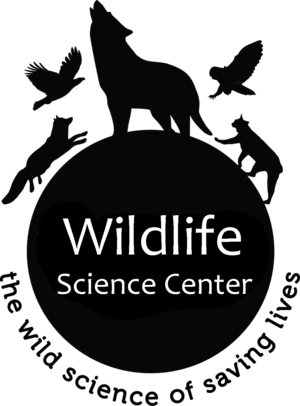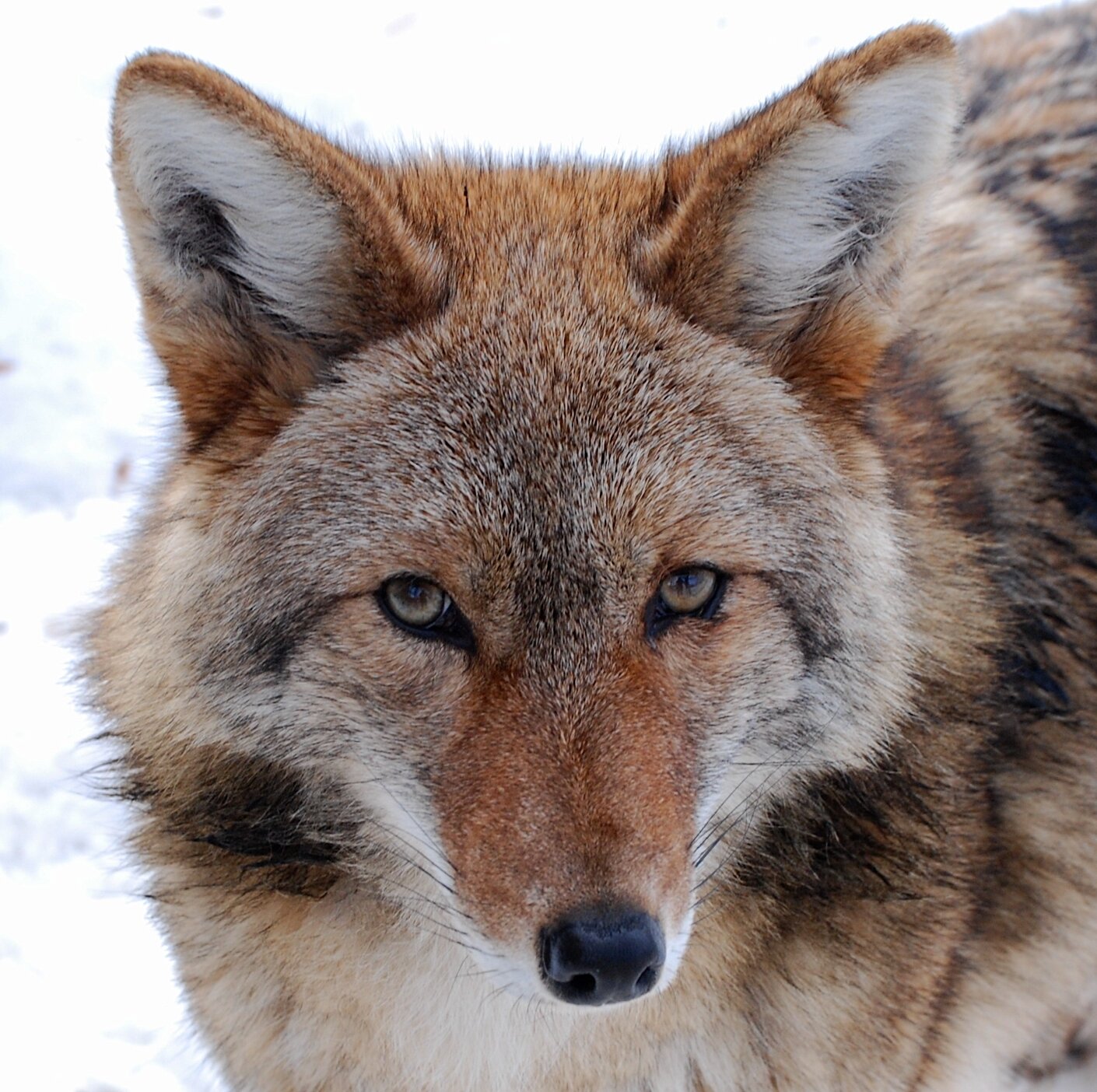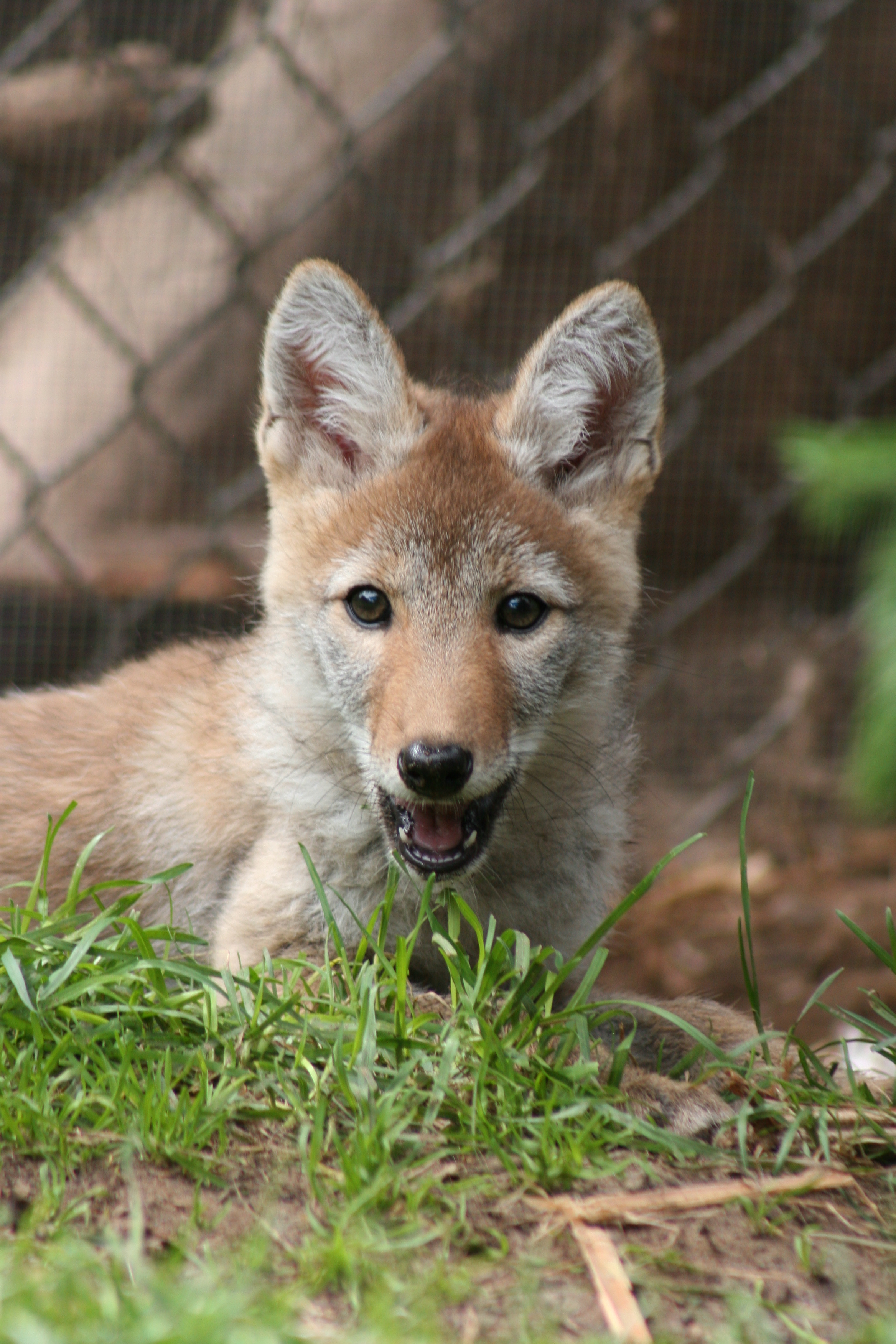Coyote
Canis latrans
IDENTIFICATION
Coyote tracks. Image from OutdoorLife.com.
Length: Adult coyotes range from 2.5 to 3.3 feet long.
Weight: Adult coyotes vary in weight from 20 to 40 pounds.
Sounds: Coyotes produce high-pitched barks, yips, yowls, and screams.
Color: They have a thick reddish or gray coat and a bushy tail with black-tipped guard hairs. Their throat and belly are light gray to white. Unlike a wolf, their muzzle is long and narrow, and their ears are more pointed.
LIFE CYCLE
Coyotes are most active at night or dusk and dawn. Coyotes can achieve speeds of 40 mph for short distances while chasing prey. They may form loose family groups, not tight family packs like wolves. These groups may form for short periods, then break apart as food supply allows.
Reproduction: Females go into heat once a year during late January or early March. After about 60 days after breeding, 5 to 7 pups are born. Both parents care for the pups. Weaning begins at 3 weeks. The young usually disperse when they are 7 to 10 months old.
HABITAT
Range: Coyotes are widely distributed throughout the USA, southern and south-central Canada, and south through Mexico into northern Central America. The northward and eastward expansions of coyote range may have been the result of wolf removal since their range is expanding in areas where wolves were eliminated. They are found throughout Minnesota, especially in the southern portions, including the Twin Cities area.
Diet: They are opportunistic predators that will prey on rodents, birds, large insects, carrion, livestock, and deer.
Status: Least Concern. In many states, including Minnesota, coyotes are a game species and can be hunted/trapped for their fur.
Wily and adaptable, Minnesota’s most abundant large predator does well where humans have changed the landscape. Here they find a booming population of rodents for food and less competition from other predators that have been pushed out.
Coyote range and historic expansion. Image from Ohio State University (via Nature.com).






